A lot of our museum volunteers join on with the impression that all they will do is handle and play with all sorts of animals. It doesn't matter if they are joining the herpetology team or any of our other departments; there is a common misconception that all keepers do is work directly with animals all day. It is true that a large portion of our day is direct animal interaction (for most departments that is; the aquarium department runs much differently) and we do try to give our volunteers a bit of hands on experience, but there is a lot more to being a keeper than working with the actual animals. There is constant cleaning, not just of enclosures, but all sorts of supplies, laundry and dishes as well. We have to consistently monitor environmental conditions, such as UV exposure, temperature and water quality. Our work areas have to be kept clean for regular inspections; sweeping, dusting and mopping are an absolute must. One of the many tasks that we handle on a daily basis is caring for our feeder collection, a task that is often delegated out to our volunteers.
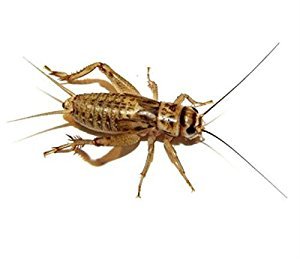
Like any other animal facility, we host animals with a huge variety of diets. We have a few herbivores, some carnivores and a lot of omnivores, especially in the herpetology department. We give our animals an incredibly varied diet to ensure they are receiving the best nutrition possible; over the course of a week, very few of our animals will receive the same food twice (barring those that specialize on a particular source of food). However, many of our carnivores will only eat live prey, prey that we call feeders. Since feeders make up a big portion of our job, I thought I would share a little bit about the care and feeding of these feeders. I will begin by talking about our invertebrate feeders.
Crickets:
For the herpetology department, crickets are probably our most reliable feeder. They are extremely popular among just about all the reptiles and amphibians; even when they are refusing food, they will often munch on a few crickets. Crickets are a great source of food as they can be fed directly to an animal using tongs, or can be released into an exhibit, allowing an animal a chance to practice natural hunting behaviors. They can be purchased in many different sizes to feed a variety of animals (from pinheads to 1-inch), and their keeping is fairly simple and straightforward. However, due to the incredible numbers of crickets we feed out, we cannot keep a self-replenishing colony; multiple times a month, we must order nearly 4,000 crickets to replenish our feeder supplies.
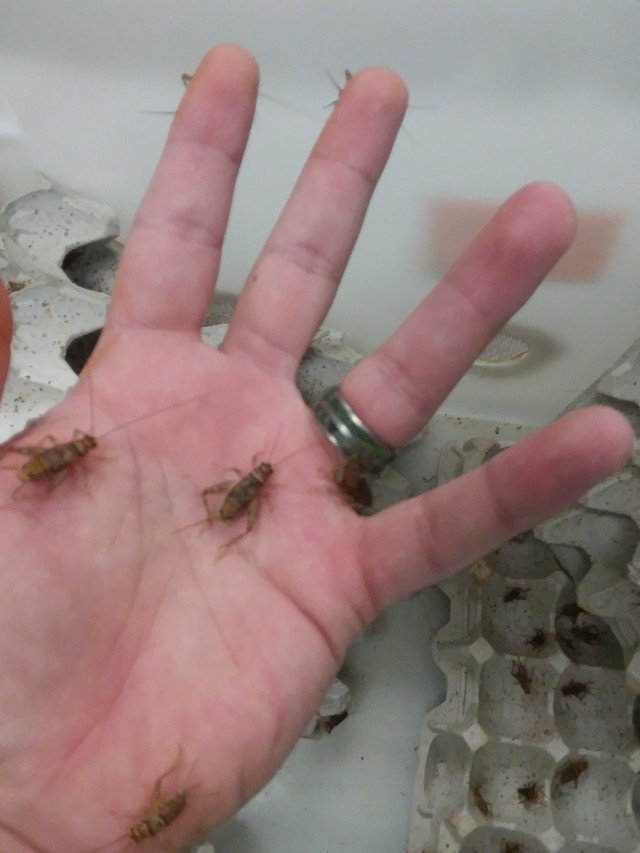
Cockroaches:
If the reptiles and amphibians like crickets, then they love cockroaches (false death head roaches to be exact). Roaches are pretty much the same as our crickets, only they can be much larger to accommodate our larger animals. Just as the varying sizes of crickets can cater to our different animals, our roaches can as well, albeit in a slightly different way: for animals that prefer a softer food, we feed our freshly molted roaches that lack a hard exoskeleton. Unlike the crickets however, our roach colony is able to replenish itself with some assistance from keepers. When plentiful, we feed them out to just about all our animals, and when their numbers dwindle, we ease up, allowing them to breed and replenish the colony. In the almost 8 years I have worked here, we have never had to order any cockroaches.
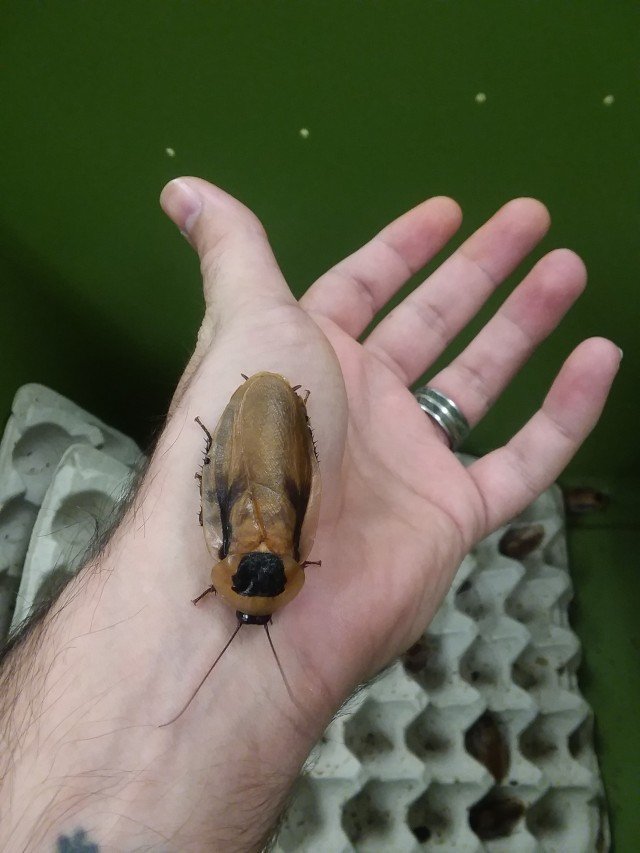
Every morning, we must clean and feed our roaches and crickets to keep them healthy. It might surprise people, but the roaches are actually much cleaner animals than the crickets are; even in just 24 hours, crickets make a horrible mess of their enclosure. Using brushes and paint scrapers, we clean each feeder enclosure, removing feces, old food, shed skins and bodies, thus keeping the colonies a little healthier. We put great care into our feeders even though they are "just bugs" because their quality of health will transfer over to our animals. This means supplying the colonies with the equipment to not only survive, but thrive; our roaches are given heat mats to allow them a warmer enclosure, while our crickets are provided with fans that keep the air of their enclosure circulating. We also "gut load" our feeders with quality food, the idea being that if these feeders are raised on nutritious foods, they will pass those nutrients on to the animals that consume them. Every morning, our crickets receive water gel, cornmeal and fresh produce like carrot or zucchini, while our roaches are fed fresh cat food in lieu of cornmeal.
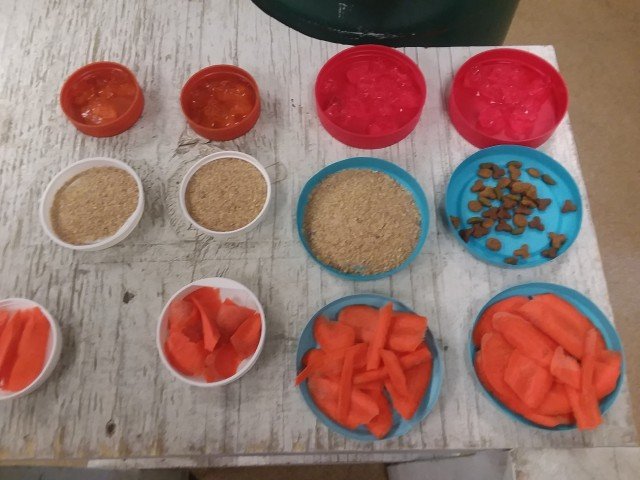
Fish:
While the live prey we feed out are predominantly invertebrates, there are a few vertebrate species we have to feed out on a regular basis. The majority of these vertebrate animals are fish, generally small minnows. Most of the fish consumed by our reptiles and amphibians are frozen and thawed, however we do have a few pickier animals that will only eat live prey. Many of these animals were born in the wild, and have never acclimated to eating food that is already dead. We order feeder fish on a regular basis to keep these animals happy and healthy. Care for the fish is fairly straightforward; they are kept in tanks monitored by our aquariums department and are cleaned and fed daily (sometimes even feed our feeder crickets). Before they can be fed out, the fish have to be put through a bath with a small amount of formalin. The formalin is not dangerous to our animals, and it helps treat the fish of any possible diseases or parasites (many facilities have had outbreaks of ick after introducing infected feeders).
Mice:
Let me start by saying that we almost never feed out live mice. Many facilities take different sides on feeding out live mice to animals like snakes, but we don't do it here. Weirdly enough, it's actually more for the protection of the animal being fed than the mouse; mice do fight back when an animal attacks them, and a mouse can inflict a bad scratch or bite if it gets lucky. One of our copperheads came from a facility that fed live mice, and had received a nasty bite on the nose from her prey and it got infected; you haven't really lived until you've rubbed topical medication on the nose of a copperhead! Luckily, our snakes are quite content to eat mice that we order frozen and thaw out for them on their feeding days. This is incredibly convenient for us as well; instead of caring for a large colony of mice (which would be messy and take up a lot of space), we can easily store hundreds of rodents in a small freezer that requires no attention.
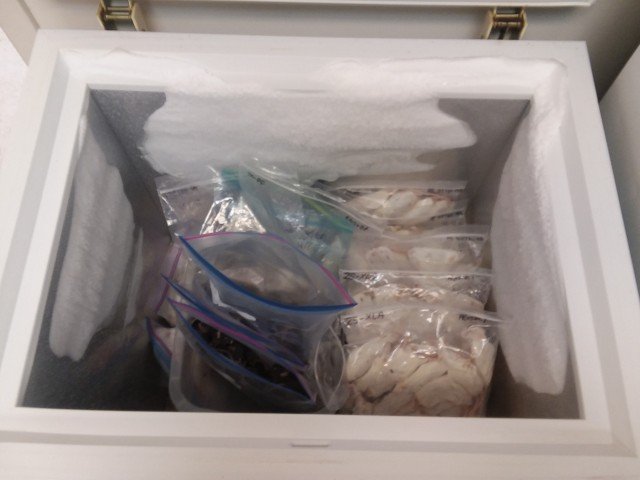
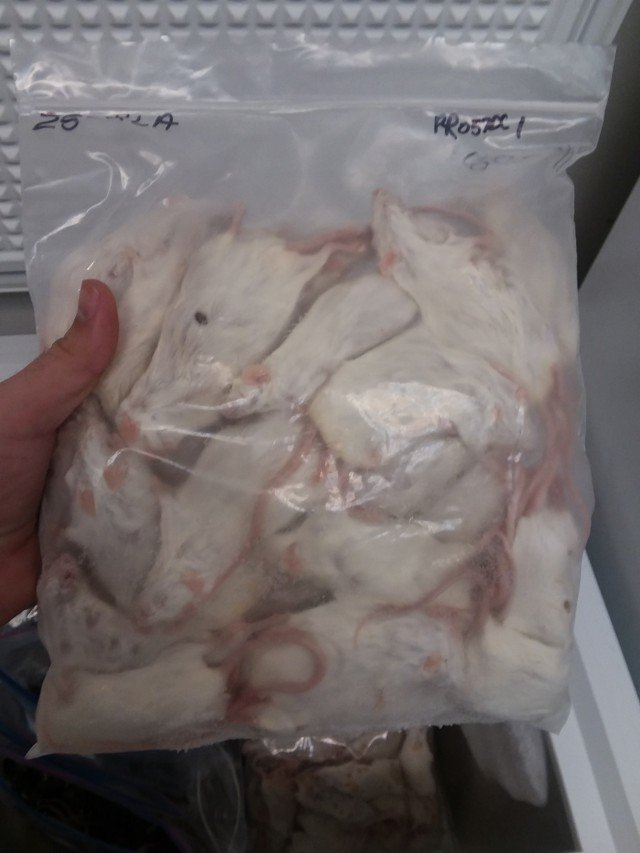
So why am I including mice then? Well, 99% of the time, we feed our snakes frozen mice with no problem. However, every so often, maybe once every few years, an animal starts refusing food. It's often due to some environmental cue, but no matter what we do, we can't get them to eat frozen mice. We try to wait them out a little bit (sometimes snakes are just weird), but if we observe any loss of weight, we have to take action. For these more dire circumstances, we do keep a small "feeder box" of live mice to be fed out. Still, we don't feed the animal live; we kill the mouse as quickly an humanely as possible (far more quickly and humanely than a snake would) and offer it to our problem animal. The scent of fresher blood and the warm body almost always entices the snake to eat; by the following feeding, they generally accept frozen mice once more.
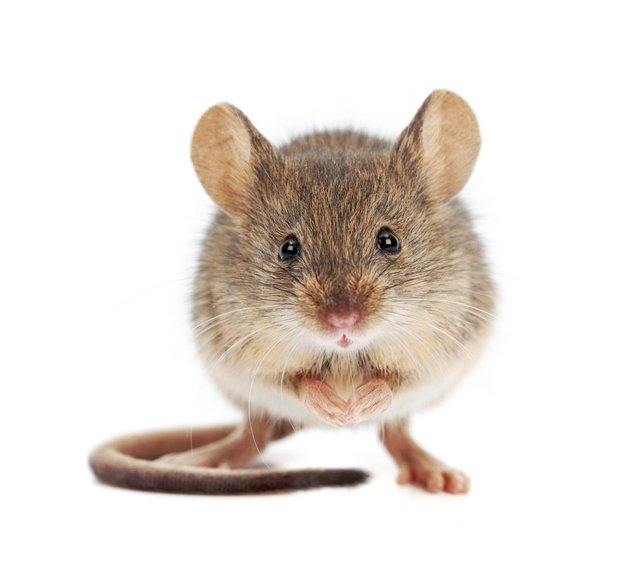
Many people don't love the idea of feeding out live prey, but it is a necessity for these animals to have the best quality life. An important part of a keepers job is ensuring the health of these animals, making sure they are cared for properly and are fed out in a manner that is as human as possible. Feeders are just another one of those tasks that people don't really consider behind the scenes, but they are critical to the welfare of the animals and success of the facility!

I have never thought about the usage of crickets and cockroaches as food. Interesting! I learned something today :)
PS: I love the snake story, with the 'no frozen food for me today' thing :)
Downvoting a post can decrease pending rewards and make it less visible. Common reasons:
Submit
They are odd animals haha. Sometimes it's a seasonal thing, especially among those born in the wild. They just kinda stop eating for like 3-5 months. But then there are times where the just stop eating for no apparent reason. One of our kingsnakes will stop eating and only resume once you use a mouse of a different color!
Downvoting a post can decrease pending rewards and make it less visible. Common reasons:
Submit
Actually, after thinking a little bit, it works the same with human babies :p
Downvoting a post can decrease pending rewards and make it less visible. Common reasons:
Submit
Well then, I had no idea this idea was that widespread! I read this recently on one of @amavi's posts too XD (can't remember which one now).
Had to laugh at "outbreaks of ick" good description.
Should have realised caring for feeder critters would also be a pretty intense activity, wow O_O
Downvoting a post can decrease pending rewards and make it less visible. Common reasons:
Submit
Volunteering is still a lot of fun, I think people just don't really understand what zoo keeping entails or what it really means to be an animal keeper. So most are surprised when they join an animal care staff and are asked to wash dishes or fold laundry. Most come around to it very quickly; we don't scare too many people off!
Oy, Ick. Ichthyophthirius multifiliis is it's full name and it's a nasty little parasite that is a real pain in the butt to get rid of. Thankfully, our aquariums department has done an amazing job of both treatment and prevention in the past!
Downvoting a post can decrease pending rewards and make it less visible. Common reasons:
Submit
It is always a funny thought that I have to care for my pet's food. Believe it or not, crickets are pretty sensitive and annoying to care for!
Downvoting a post can decrease pending rewards and make it less visible. Common reasons:
Submit
They certainly are! It's amazing how much of my day is made up of caring for them, but it's worth it when our animals receive quality nutrition!
Unfortunately, they are all over my house...
Downvoting a post can decrease pending rewards and make it less visible. Common reasons:
Submit
Neat job, I could never do that... I like fish and wild life... But can't deal with insects or snakes.
Great post!
Downvoting a post can decrease pending rewards and make it less visible. Common reasons:
Submit
You go through great lengths to keep the animals healthy. I bet if I were a snake and only fed frozen mice I might go off my feed and want something else. Does that make me fickle?
Downvoting a post can decrease pending rewards and make it less visible. Common reasons:
Submit
Haha it just makes you human. Most snakes feed predominantly on rodents, so they are the main food source used. Some species do feed on birds, eggs, amphibians, other reptiles and even other snakes, but we tend to avoid those foods as they seem very content with mice. We actually keep some species specifically because they like mice; for example, the native eastern hognose does poorly in captivity because they only eat toads, so we display the closely related and similar looking western hognose because they thrive in captivity on a diet of mice.
Some of our snakes (cottonmouths and garter snakes) are also fed a diet of fish and worms to simulate their natural food source.
Downvoting a post can decrease pending rewards and make it less visible. Common reasons:
Submit
Good to know. You have a very interesting job.
Downvoting a post can decrease pending rewards and make it less visible. Common reasons:
Submit
YOu do an awesome jobs caring for those animals.
That bag of mice though... lol
Maybe next you'll show us the feeding frenzy of hungry snakes . I prefer the live mice version as it's more interesting to watch. A dead mouse is boooring
Downvoting a post can decrease pending rewards and make it less visible. Common reasons:
Submit
Thank you! I actually keep a similar bag of mice in my own freezer at home...right next to the frozen waffles! xD
I do understand with the live mice; I don't particularly enjoy seeing them killed, but it is fascinating to watch a snake hunt and catch its prey. I think for most facilities it comes down to how many snakes they have and how much time they have to feed them. If you have time to watch and make sure the snake isn't injured, I think feeding live is a good enrichment that stimulates the snake through hunting behaviors. We have a lot of snakes and we just don't have the kind of time for that level of supervision. Much easier to give a snake its food and walk away knowing there's no risk...we can just check back later to see if it ate. Honestly, the risk of a mouse injuring a snake is quite low, but I've seen a couple instances of those bites becoming badly infected, so I never liked to risk it!
Downvoting a post can decrease pending rewards and make it less visible. Common reasons:
Submit
That's cool! I completely understand what you're saying.
Downvoting a post can decrease pending rewards and make it less visible. Common reasons:
Submit
Wish I had your job :(
Downvoting a post can decrease pending rewards and make it less visible. Common reasons:
Submit
Volunteer! It's the easiest means of getting into the field and you do get to do some cool stuff!
Downvoting a post can decrease pending rewards and make it less visible. Common reasons:
Submit